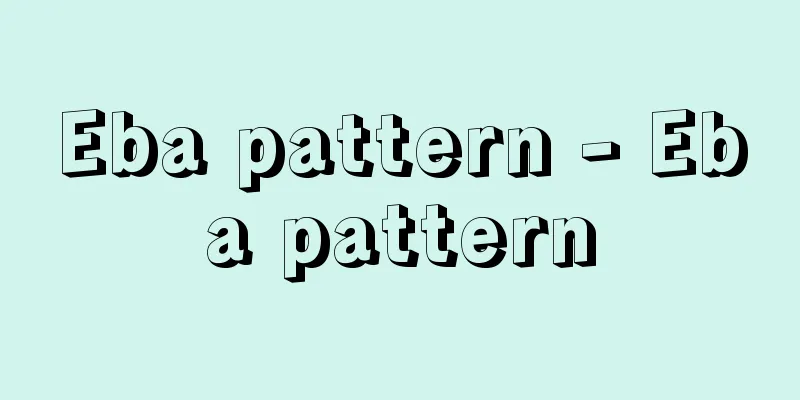Eba pattern - Eba pattern

|
A method of applying patterns to Japanese clothing. White fabric is sewn into the shape of a kimono or haori and then dyed so that the pattern continues along the seams. Examples include furisode, tomesode, houmongi, ehahaori, and ehagomeshi. Source : Heibonsha Encyclopedia About MyPedia Information |
|
和服の模様のつけ方。白生地を着物や羽織の形に仮縫いし縫合せの部分も模様が続くように染めたもの。振袖(ふりそで),留袖,訪問着,絵羽羽織,絵羽御召などがある。
出典 株式会社平凡社百科事典マイペディアについて 情報 |
Recommend
Shale diapir (English spelling) shalediapir
...Salt domes have a variety of external shapes, ...
Corinthian order
…They placed special importance on columns among ...
"Ghost Story Breast Enoki" - Kaidanchibusa no Enoki
...When he died, his request to be cremated was f...
Wang Shishen
…Eight individualistic painters who were active i...
Fushimiya Shirobei - Fushimiya Shirobei
Years of birth: unknown. A merchant in the mid-Edo...
《Flower Armor》
…He died in Beijing in 1959, where he had been in...
Bai Xing-jian (English: Bai Xing-jian)
[Born] 10th year of the Taireki era (775)? [Died] ...
Cirque de Gavarnie
A cirque on the western slope (French side) of Mar...
follicle-stimulating hormone
...The sexual cycle is brought about by a kind of...
Xixia - Western Xia
It is one of the extinct languages belonging to...
Yasujiro Niwa
Electrical engineer. Born in Mie Prefecture. Grad...
Kiruna (English spelling)
A mining town in Norrbotten County in northern Swe...
Plate
...A general term for plate-shaped materials made...
Usugeyanagiran - Usugeyanagiran
...It grows in colonies in open grasslands and de...
Acocanthera schimperi (English spelling) Acocantheraschimperi
…There are many types of poisons used, but there ...









![Yuto [town] - Yuto](/upload/images/67cd121d1da0e.webp)